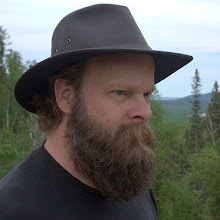I need to recreate a little piece of Lake Fletcher here in Guelph. It wasn’t the place’s salubrious effect that surprised me–over the years it has hit me that way many times. What always surprises me is how badly I need it, how far and how blindly I’ve wandered down the wrong path when the bright water, rich forest and clear air snap me suddenly home.
It is home, more than any other place will ever be; the place where my spirit knows its own name.
Over the weekend I conceived the idea of setting aside a dream room when I move into the new apartment on August 1, with a plaque on the doorpost saying, “Leave your troubles at the door.” I love my old office with its bright windows, but it’s cluttered and full of trouble, the easiest place to sit and worry.
I’m imagining a new work space where bills and forms are not allowed, a place reserved for writing, knitting, drawing, meditation, staring out the window, sleep and dreaming; a door I expect to pass through every day, with reverence and self-respect.
When I think of room to dream I'm reminded of my friend Ziggy, who has kept a dream journal for as long as I've known her. I can see how she has derived insight into the workings of her own mind. In my dream room I would resume exploring the adventures of my sleep, too.
Somewhere else I’ll have a desk for dealing with the burdensome trivialities of life.
Maybe this room itself is a dream, impractical, but I would at least like to try. I created this square of hope using burgundy and lilac yarn; purple is the colour of the dream world. For the stockinette rows, slightly hidden, I used a variegated yarn in jewel tones, representing the treasure that waits to be uncovered when I have time and patience.
